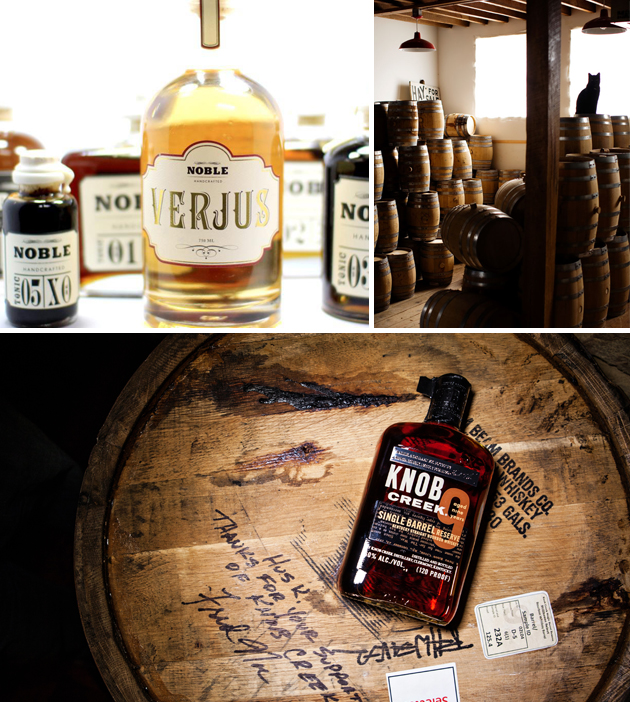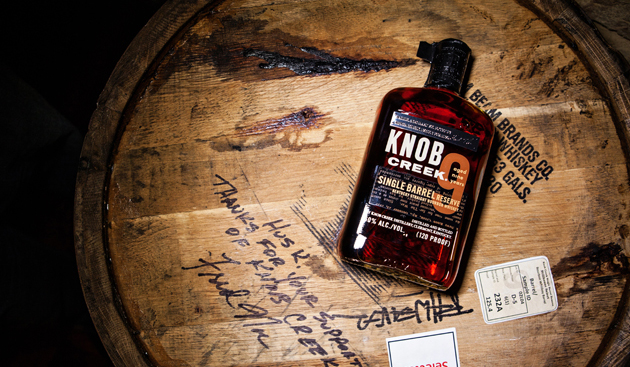
Bartenders in New York made news a couple of years ago when they began aging cocktails like Negronis in small oak bourbon casks from upstate New York’s Tuthilltown Spirits. Now, bourbon cask-aged chocolate, maple syrup, hot sauce and soy sauce—all kissed with bourbon’s caramel, vanilla and smoky flavors—are showing up at gourmet shops and on menus at restaurants including Forbes Travel Guide Five-Star The French Laundry in Yountville, Calif., David Chang’s Momofuku in New York and Husk in Charleston, S.C.
For instance, Forbes Travel Guide Tastemaker chef Thomas Keller likes Noble Handcrafted Tonic 01 maple syrup—it’s matured in Tuthilltown Spirits bourbon barrels. And Homaro Cantu of the molecular tasting room Moto in Chicago uses Noble Tonic 05 XO, a finishing vinegar with notes of maple and bourbon. Both are aged in small casks that once held Hudson Bourbon.
Whiskey can only be called bourbon if it’s aged in a charred, white American oak barrel that’s used just once—so spent barrels certainly pile up. They’re often shipped to Scotland to age Scotch or to the Caribbean to flavor rum. A new, empty barrel weighs 90 pounds; after it’s aged a batch of bourbon, a barrel weighs about 115 pounds.
“A lot of bourbon has worked into the wood,” says Matt Jamie, a former chef who’s a pioneer in bourbon-barrel aging. His company, Bourbon Barrel Foods located in Louisville, Ky., started making non-GMO Bluegrass Soy Sauce fermented in Woodford Reserve craft bourbon barrels about six years ago. He now offers a barrel-aged vanilla extract, and in early December debuted bourbon-barrel spiced cherry cocktail bitters he created for Woodford Reserve.
While recycling and sustainability are the food movements du jour, The McIlhenny Company in Louisiana has used bourbon barrels to flavor its legendary Tabasco sauce since the late 1800s. The barrels are refinished to remove the char from the inside so the mash of hot peppers, vinegar and salt takes its flavor from the wood rather than the bourbon.
But these days it’s that caramel, toasty, sweet bourbon flavor that people want—especially with their sweets. Case in point: the bourbon cask-aged chocolate bar from Raaka Chocolate, a Brooklyn-based company that uses raw (or unroasted) chocolate. Virgin cocoa nibs spend a month in old Berkshire Mountain Distillery barrels before they’re ground and made into chocolate bars.
“The bourbon cask-aged bar is our second-best seller. It does well among foodies who want something really unique,” says Ryan Cheney, Raaka’s founder. “It’s a little bit dark and it can scare away folks afraid of bold chocolate.”
Chef Matthew Lightner of New York’s Atera restaurant in Tribeca lures foodies with his bourbon cask ice cream sandwich. He fills a Tuthilltown Spirits bourbon cask with milk from a small farm in Pennsylvania and lets the barrel cold-infuse the milk. “We keep [the milk] there for about two weeks and then take it out and make ice cream with it,” Lightner says. “It’s a beautiful, delicate flavor.”
Other chefs have used barrels for extreme projects that would make even the innovative chef Ferran Adrià of famed (and now closed) restaurant El Bulli proud. Working in his lab, Forbes Travel Guide Tastemaker David Chang began developing soy sauce for his Momofuku restaurants a few years ago. The process involves filling barrels with a mix of soybeans, wheat and water that’s inoculated with aspergillus koji—the mold that starts the fermentation process for traditional soy sauce—to make a high-quality product.
James Beard Award-winning chef Sean Brock of Husk in Charleston uses Pappy Van Winkle bourbon barrels to create soy sauce, plus a bourbon barrel miso that adds extra punch to dishes such as chicken and dumplings. He has also filled barrels with pork fatback and herbs to make his Southern-style lardo, and even aged a hot pepper sauce for three years.
Brock’s greatest barrel-aged inspired flavoring, though, might be the Buffayaki sauce—a mix of his own hot sauce, butter and Kentuckyaki sauce from Bourbon Barrel Foods. He tosses the savory-sweet sauce over pig ears that have been pressure-cooked to tenderness, then smoked and fried.
“People lose their minds over that,” Brock says. “People stop me walking down the street to tell me how much they love the pigs’ ears.”
Photos Courtesy of Husk

